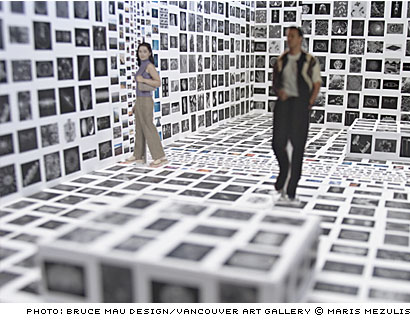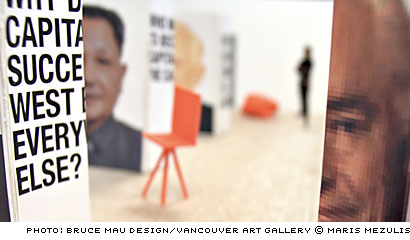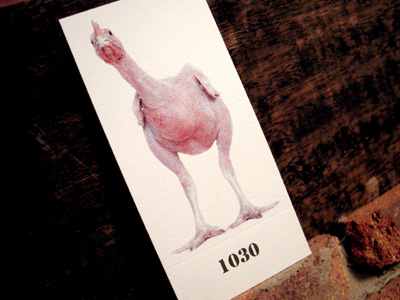In this episode I tour the rest of the exhibits on the first floor, but not without encountering the first glitch with The World According to Bruce.
(Where have I heard that before?) This room of images has to be experienced to be appreciated. I’m particularly glad I came early in the show (it opened a week ago), while everything is still shiny and clean.

I have to say, I want a room like this in my house. It is both sterile and fertile at the same time; both calming and energizing. Here we see imagery from x-rays, microscopes, ultrasound and various other technological image sources, plus photographs of people, sunsets, places, under water, etc. grouped in themed strips. Aesthetics off the table, my ass. There was something compelling about this in a way that was missing from most of the other rooms. The images, as a collection and individually, are open to interpretation. They speak, of course, to that gamut of human life on this planet, both inside and outside our bodies; but they also invoke individual stories of our own invention. In an overwhelming exhibit of individually overwhelming displays, this overwhelming collection of images is actually the most intimate point of them all.
At last I got to use my card with the bar code. But to what end? Why? The room is dotted with video-display kiosks which are activated by putting the bar-code under a groovily lit reader. Unfortunately, they are not deactivated by removing the card, so the room is a cacophony of sound as the players orate to audiences who have left. Similarly there are tubes dangling from the ceiling which sense your presence as you stand under them and activate more monologues. In case you are too lazy to listen to all the narratives, there is a brief synopsis printed on the side of each kiosk, or, in the case of the tubes, on a card in front of you.
But why the kiosks? Why the tubes? Why the card? The card knows nothing about me so it’s not transmitting any information, collecting or storing data. It’s not telling anything anything except “on/off” and I can do that better myself—especially the “off” part.

And here’s where I really start to struggle with Bruce as well, because the economic information being offered, while some of it is interesting (the Bangladesh bank which offers small loans; the Bill and Melinda Gates Foundation), much of it raises serious questions in my mind about its “value” in this new global vision.
Take, for instance, Mecca Cola. This cola, distributed in Muslim countries, bears an inept resemblance to CocaCola in packaging. The difference is that they donate 10% of their profits to e.g. Palestinian children. Their tagline is “No more drinking stupid, drinking commitment.” But, ahem, as interesting as this is, is it really wise to tout the benefits of the marketing of a sugar-saturated drink based on the product (and the symbol) of one of America’s largest corporations? Are there not some challenging cultural questions in this? Questions which go not only unanswered, but unasked.
Next box, China, and a salute to their cheap, willing labour force which promises to make them the world’s biggest economic power in about 12 years. But nothing about the conditions under which they work, or the impact on the world economy, environment or anything else as this massive country exits the third world and enters the first. Politics? It would appear that it, too, is off the table.
WalMart, the American success story, based on the design of efficient systems of distribution, and their “increasing pressure on suppliers.” China and WalMart walk hand in hand to bring inexpensive goods to the North American public, but at what cost to our own industries, the welfare of our workers, the condition of our land and resources? I have these questions, and I am astounded that Massive Change does not.
Suddenly this unbridled optimism seems to look straight ahead to the future without glancing to either side as it speeds along in the fast lane.
It’s all production and building and growth and escalation. Is there no contemplation in design? No query, pause or reflection? Is the design of the world really about charging forward with a gleam in our eye? Where is the humanity in Mau’s vision of the design of humanity? There are consequences to technology, and that is as much a part of design as possibility.
: :
Read Part 3 of Massive Post or Part 1







> “We will make visible the as-yet invisible”
> (Where have I heard that before?)
Hillman Curtis: Making the Invisible Visible.
Much more eloquently put by Curtis, I think.
On Oct.14.2004 at 08:32 AM